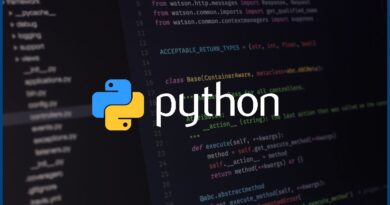10 Open-Source Resources Every Data Scientist Needs to Learn
Find out which are the top 10 free and open-source data science tools. Develop your abilities in data analysis.
The discipline of data science has expanded rapidly in recent years, and open-source technologies have played a key role in this rapid expansion. Data scientists employ a range of tools and platforms to collect, analyse, and draw conclusions from massive databases. Because open-source software allows data professionals to work efficiently, creatively, and affordably, it has transformed the game.
Regardless of skill level, every data scientist should be able to use the ten open-source tools that will be covered in this post. With the use of these resources, data scientists can tackle difficult assignments, conduct in-depth studies, and display data in logical ways. Now let’s begin using this practical toolkit:
- Python:
One of the most widely used computer languages for data science is Python. Data scientists find it to be a highly recommended option due to its huge libraries, ease of use, and vibrant developer community. Both novice programmers and seasoned experts find Python’s readability and versatility to be quite appealing. It provides necessary libraries such as Pandas for data manipulation, Matplotlib for data visualisation, and NumPy for numerical computations. - R:
Another popular programming language for data analysis and visualisation is R, which is frequently referred to as the “lingua franca of statistics.” R’s extensive statistical library and potent data visualisation features make it a preferred tool among data scientists. To properly understand data, you may create graphs, charts, and statistical models with R with ease. - Jupyter Notebook:
The de facto standard for data science collaboration and documentation is the open-source web application Jupyter Notebook. With its help, data scientists may produce and distribute papers that include narrative language, mathematics, live code, and visualisations. Python, R, and Julia are just a few of the computer languages that Jupyter Notebooks support, giving it a flexible tool for sharing ideas and exploring data. - Scikit-learn:
Building machine learning models is made easier with the help of scikit-learn, a powerful Python machine learning package. It offers a wide range of techniques for clustering, regression, classification, and dimensionality reduction. Scikit-learn is a tool that data scientists can use to evaluate model performance and deploy different machine learning approaches. - Flow Tensor:
TensorFlow is an open-source machine learning framework created by Google specifically for deep learning applications. It offers frameworks and tools for configuring and refining deep neural networks. Data scientists can handle challenging tasks like natural language processing, picture and audio recognition, and more with TensorFlow. - PyTorch:
Another deep learning framework that is well-known for its adaptability and dynamic computing graph is called PyTorch. Because of its great usability and capability for large neural network experimentation, it has become extremely popular. Creating and refining machine learning models is much easier with PyTorch, especially when working on deep learning tasks. - Apache Spark:
Apache Spark is the recommended framework for working with large amounts of data. It provides possibilities for distributed computing that greatly accelerate data processing. With Spark, data scientists can effortlessly handle tasks like data transformation, data wrangling, and machine learning on huge datasets. - SQL:
The ability to use Structured Query Language (SQL) is essential for data scientists. Relational database management and querying require SQL. Data scientists can retrieve, modify, and examine data from different database systems using SQL. It can be used to create, alter, and query databases. It is an essential tool for working with structured data. - Tableau:
Tableau is a potent tool for data scientists to visualise data and generate dashboards that can be shared and interacted with. It turns complicated data into visually appealing representations that are simple to comprehend, enabling data scientists to successfully convey their discoveries and insights to stakeholders who are not technical. - GitHub:
Version control and teamwork are essential for data science initiatives. With GitHub, data scientists can collaborate, exchange code, and monitor project updates all on one web platform for version control and teamwork.



